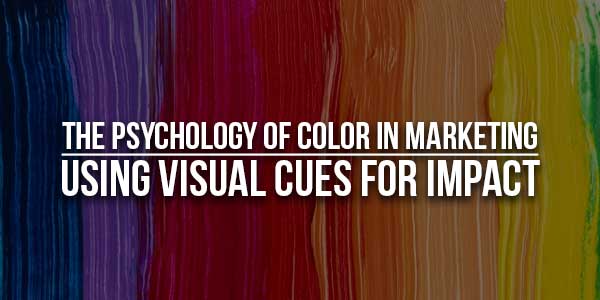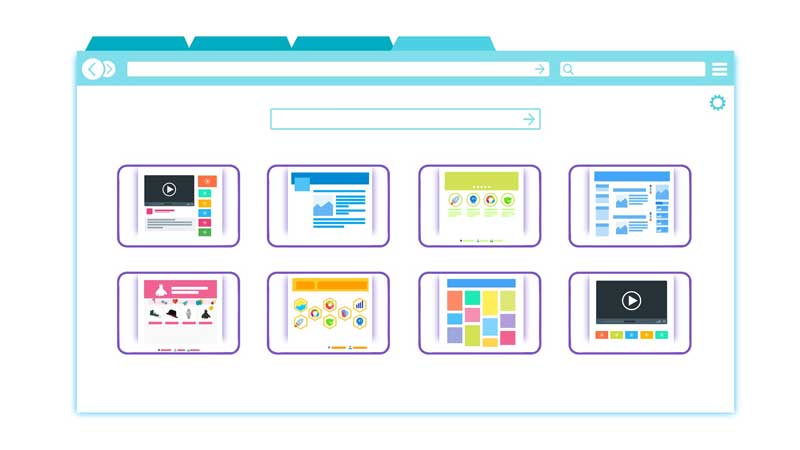
Marketing is a puzzle made up of almost too many pieces to recognize them all. However, sometimes even the most subtle practices can seriously affect the success of your efforts! To show this, let’s go over the psychology of color in marketing: using visual cues for impact!
Table of Contents
The Power Of Color Psychology:
Understanding the power of color in marketing can significantly improve organic traffic to your website. Colors evoke emotions and shape perceptions, directly influencing consumer behavior. So, by strategically incorporating colors into your website’s design and content, you can guide visitors’ emotions and actions. In essence, leveraging color psychology enhances user experience, resulting in higher engagement and ultimately boosting your website’s organic traffic.
Red: Energetic And Attention-Grabbing:
Red is a color of energy and attention-grabbing power, making it a dynamic choice for branding. The vibrancy of red immediately captures the eye, making it an effective tool for drawing attention to key elements in your designs or marketing materials. This color’s association with passion and urgency can evoke strong emotions, driving action and engagement. From sales banners to call-to-action buttons, red can create a sense of urgency and excitement. When employed judiciously, red can infuse your brand with a burst of energy that resonates with audiences looking for dynamic and passionate experiences.
Blue: Trustworthiness And Serenity:
Blue embodies trustworthiness and serenity, making it a versatile and impactful choice for branding. The calmness associated with blue generates a sense of reliability and professionalism, perfect for building trust with customers. By leveraging blue strategically, you can communicate a message of dependability and clarity, fostering a connection with customers seeking assurance and peace of mind.
Green: Growth And Health:
Green symbolizes growth and health, making it a powerful choice for branding and communication. As the color most associated with nature, green evokes a sense of vitality and renewal. Its calming effect aligns with the idea of well-being, making it an excellent fit for the health and wellness industries. The color’s connection to growth and harmony also resonates with eco-friendly and sustainable initiatives. Employing green strategically can convey a message of balance, freshness, and positivity. Therefore, by incorporating green into your branding, you tap into a universal symbolism that resonates with audiences seeking vitality, renewal, and a sense of equilibrium.
Yellow: Optimism And Positivity:
Incorporating the color yellow into your marketing strategy can significantly improve your marketing efforts. This vibrant hue captures attention and radiates energy, making it an excellent choice for call-to-action buttons or eye-catching elements on your website or advertisements. By associating your brand or message with these positive emotions, you can create a memorable and uplifting experience for your audience. So, whether you’re launching a new product or promoting a special offer, the color yellow can enhance the perceived value and encourage engagement.

Purple: Luxury And Sophistication:
Purple exudes an air of luxury and sophistication, making it a captivating color choice for branding. With its regal associations, purple conveys a sense of opulence and exclusivity. Furthermore, the deep and rich tones of purple evoke a feeling of elegance and prestige. This color’s rarity in nature enhances its allure, adding to its perception of uniqueness. So, whether used as an accent or a primary color, purple has the ability to elevate your brand’s perception and establish a refined identity.
Black: Power And Elegance:
Black, with its timeless allure, embodies both power and elegance. The color black exudes authority and sophistication, making it a popular choice for luxury brands. When incorporated strategically, black can create a strong visual impact, underscoring the importance of your message or product. It’s a color that effortlessly communicates a sense of prestige and exclusivity. Moreover, black’s neutrality also allows other colors to pop, enhancing overall design aesthetics.
White: Simplicity And Purity:
The color white holds profound symbolism, embodying simplicity and purity. So, white’s clean and uncluttered nature conveys a sense of openness and clarity. This makes it a popular choice for minimalist designs, where simplicity is a central theme. White backgrounds can also make content stand out, enhancing readability and guiding the viewer’s focus. In a world flooded with visual stimuli, the calming effect of white can provide a serene space for your message, allowing it to shine clearly and genuinely!
Color Combinations: Creating Harmonious Messages:
Color combinations play a pivotal role in creating harmonious and impactful messages. The way colors interact can evoke specific emotions and reinforce your brand identity. Complementary colors, like blue and orange, enhance contrast and capture attention. Moreover, analogous schemes, such as combining neighboring colors like green and blue, offer a pleasing and cohesive look. And triadic combinations, like using three evenly spaced hues on the color wheel, add vibrancy and balance. In order to create messages that resonate, consider the psychological effects of your chosen colors and how they align with your intended message.
Cultural And Contextual Considerations:
When delving into color in marketing, cultural and contextual considerations are paramount. After all, colors hold diverse meanings across cultures, impacting how your message is received. What’s seen as positive in one culture could be negative in another. Context matters, too, as the same color might evoke different emotions in various scenarios. Therefore, research your target audience’s cultural preferences and the context of your message to ensure your color choices align with the values and emotions you intend to convey. Sensitivity to cultural and contextual nuances not only avoids misinterpretation but also strengthens your connection with the audience! By tailoring your palette appropriately, you can bridge cultural gaps, evoke desired emotions, and create a lasting impact that resonates across diverse backgrounds.
The Importance Of Consistency:
Consistency in color usage holds immense significance for effective branding and marketing. Using consistent colors across various touchpoints like your website, social media, and marketing materials builds strong brand recognition. So, when customers encounter your signature colors repeatedly, they associate them with your brand’s values and offerings. This familiarity cultivates trust and loyalty. Moreover, maintaining a uniform color palette enhances the professionalism of your brand, making it easier for audiences to remember and identify you. Consistency extends beyond visuals, too, as it reinforces the emotional connection your brand establishes. These cohesive visuals and emotional associations collectively leave a lasting imprint on consumers’ minds! In a cluttered marketplace where attention spans are short, maintaining color consistency contributes to your brand’s memorability and competitiveness!
A/B Testing And Color Impact:
A/B testing to assess the impact of color in marketing is an interesting and valuable strategy for refining your approach. By testing different color variations, you gain insights into which hues resonate most with your audience and drive desired actions. So, this empirical data-driven method eliminates guesswork and allows you to optimize color choices for maximum effect. Excitingly, AI technology has transformed marketing testing. With AI, you can analyze test results more efficiently and comprehensively, further enhancing your decision-making process. Incorporating AI into your A/B testing toolkit empowers you to make data-backed color decisions that align with your brand’s goals and resonate with your audience. This dynamic approach to color testing contributes to better engagement and higher conversion rates, giving you a competitive edge in today’s fast-paced digital landscape.
Working To Master Color In Marketing:
With our guide on the psychology of color in marketing: using visual cues for impact, you can maximize the effectiveness of your designs! So, do not hesitate the leverage the power of this approach for your use.

 About the Author:
About the Author:
















Be the first to write a comment.